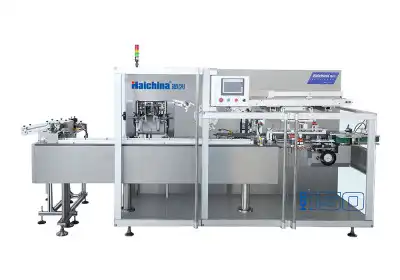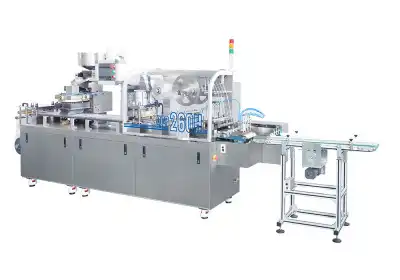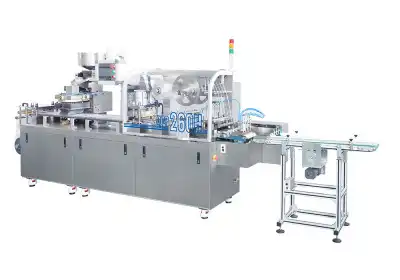What Is the Lead Time for Custom Packaging Equipment?
The lead time for custom packaging equipment typically ranges from 8 to 16 weeks, depending on various factors such as the complexity of the machinery, specific customization requirements, and current production schedules. This timeframe encompasses the entire process from initial design and engineering to manufacturing, testing, and delivery. For standard packaging machines, lead times may be shorter, around 6-10 weeks. However, highly specialized or large-scale custom packaging solutions could require up to 20 weeks or more. It's crucial to discuss your specific needs and timeline with the manufacturer to get an accurate estimate for your custom packaging equipment project.
Factors Influencing Lead Times for Custom Packaging Equipment
Complexity of the Machinery
The level of complexity involved in custom packaging equipment greatly influences the lead time required for delivery. Machines that incorporate numerous components, advanced automation technologies, or highly specialized functions tend to take longer in both design and manufacturing stages. For example, a sophisticated multi-functional cartoning machine equipped with integrated quality control and inspection systems will naturally require more engineering efforts and testing phases compared to simpler models like basic flow pack machines. This additional complexity extends the timeline significantly due to the need for precision and reliability.
Customization Requirements
The degree to which packaging equipment must be customized plays a crucial role in determining how long the production process will take. Minor adjustments to pre-existing machine designs can often be implemented quickly, with minimal disruption. However, fully custom-built machines tailored to unique specifications involve longer development periods, including detailed engineering, multiple prototyping rounds, and thorough testing. Features such as bespoke package dimensions, custom sealing technologies, or adherence to specific regulatory standards introduce extra design considerations that inevitably increase the overall lead time.
Current Production Capacity
The manufacturer's present workload and available production resources significantly affect the lead time for custom packaging equipment. During periods of high demand, such as peak business seasons or when multiple large projects overlap, manufacturers may experience capacity constraints, which can result in delayed delivery schedules. It is important to communicate early with your chosen supplier about their current production commitments and timelines. Proper planning and scheduling of your order can help mitigate the risk of delays and ensure a smoother production process tailored to your project needs.
Stages in the Custom Packaging Equipment Production Process
Design and Engineering Phase
The initial stage of creating custom packaging equipment involves detailed design and engineering. This phase typically takes 2-4 weeks and includes:
- Conceptualization of the machine based on client requirements
- Creation of detailed technical drawings and 3D models
- Selection of appropriate materials and components
- Simulation and analysis to optimize performance
During this crucial stage, collaboration between the client and the engineering team is essential to ensure the final design meets all specifications and regulatory standards.
Manufacturing and Assembly
Once the design is approved, the manufacturing and assembly process begins. This stage usually takes 4-8 weeks, depending on the complexity of the equipment. Key activities include:
- Procurement of raw materials and components
- Fabrication of custom parts
- Assembly of mechanical, electrical, and pneumatic systems
- Integration of control systems and software
Advanced manufacturing techniques such as CNC machining and 3D printing may be employed to create precise components for the custom packaging machinery.
Testing and Quality Assurance
Before delivery, custom packaging equipment undergoes rigorous testing and quality assurance procedures. This phase typically lasts 1-2 weeks and involves:
- Functional testing of individual components
- Full system integration tests
- Performance evaluations under various operating conditions
- Compliance checks with relevant industry standards (e.g., CE, cGMP)
Thorough testing ensures that the custom packaging machinery meets all performance specifications and safety requirements before shipping to the client.
Strategies to Optimize Lead Times for Custom Packaging Equipment
Early Engagement with Manufacturers
Initiating discussions with packaging equipment manufacturers early in your project planning can significantly reduce lead times. By involving experts from the outset, you can:
- Refine your requirements more efficiently
- Identify potential challenges and solutions proactively
- Allow manufacturers to allocate resources and plan production schedules
- Explore opportunities for using existing designs or modules to expedite the process
Early engagement also facilitates better communication and collaboration throughout the project, minimizing the risk of misunderstandings or delays.
Modular Design Approach
Adopting a modular design approach for custom packaging equipment can help reduce lead times. This strategy involves:
- Using standardized components and modules where possible
- Customizing only the essential elements specific to your requirements
- Leveraging pre-engineered solutions for common functions
- Facilitating easier upgrades and modifications in the future
Modular designs often result in faster production times and can offer greater flexibility for future adaptations of your packaging machinery.
Streamlined Approval Processes
Implementing efficient approval processes within your organization can significantly impact lead times for custom packaging equipment. Consider the following strategies:
- Designate key decision-makers and establish clear lines of communication
- Set realistic timelines for internal reviews and approvals
- Utilize digital collaboration tools to facilitate rapid feedback and revisions
- Conduct regular project status meetings to address any issues promptly
By minimizing delays in the approval process, you can help keep the custom packaging equipment project on schedule and potentially reduce overall lead times.
Conclusion
Understanding the lead time for custom packaging equipment is crucial for effective project planning and management. While typical lead times range from 8 to 16 weeks, various factors can influence this timeline. By considering the complexity of the machinery, customization requirements, and production capacity, businesses can better anticipate and plan for their packaging equipment needs. Employing strategies such as early manufacturer engagement, modular design approaches, and streamlined approval processes can help optimize lead times and ensure successful implementation of custom packaging solutions.
Contact Us
Ready to explore custom packaging equipment options for your business? Contact Zhejiang Haizhong Machinery Co.,Ltd. at [email protected] to discuss your specific requirements and get accurate lead time estimates for your project.
References
Smith, J. (2022). "Custom Packaging Equipment: From Concept to Delivery". Journal of Packaging Technology.
Johnson, A. et al. (2021). "Optimizing Lead Times in Custom Machinery Manufacturing". International Journal of Production Research.
Brown, R. (2023). "Modular Design Approaches in Packaging Equipment". Packaging Engineering Quarterly.
Lee, S. and Park, K. (2022). "Factors Affecting Lead Times in Custom Industrial Equipment". Journal of Manufacturing Systems.
Wilson, M. (2021). "Quality Assurance Processes for Custom Packaging Machinery". Quality Engineering Review.
Garcia, L. et al. (2023). "Efficient Project Management Strategies for Custom Equipment Manufacturing". Project Management Journal.

Submit the form now to get a unique quote!

ZHEJIANG HAIZHONG MACHINERY CO., LTD.
Popular Blogs
-
 Successful caseProducts and services
Successful caseProducts and servicesHow to Train Employees to Operate a Bottle Packing Machine Effectively?
-
 Successful caseIndustry insights
Successful caseIndustry insightsThe Blister Packaging Process: A Complete Step-by-Step Guide
-
 Successful caseComparative analysisIndustry insights
Successful caseComparative analysisIndustry insightsWhat Type of PVC Is Best for Blister Packing Machines?